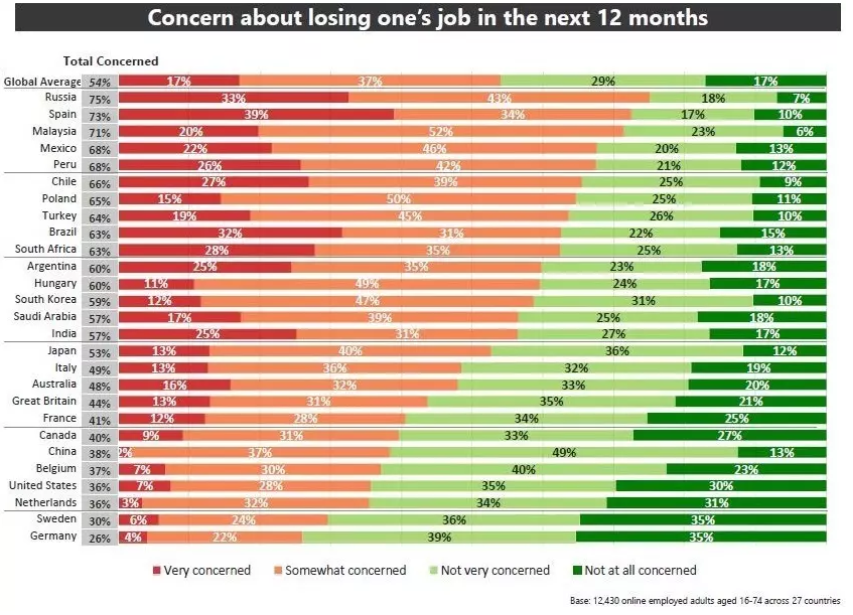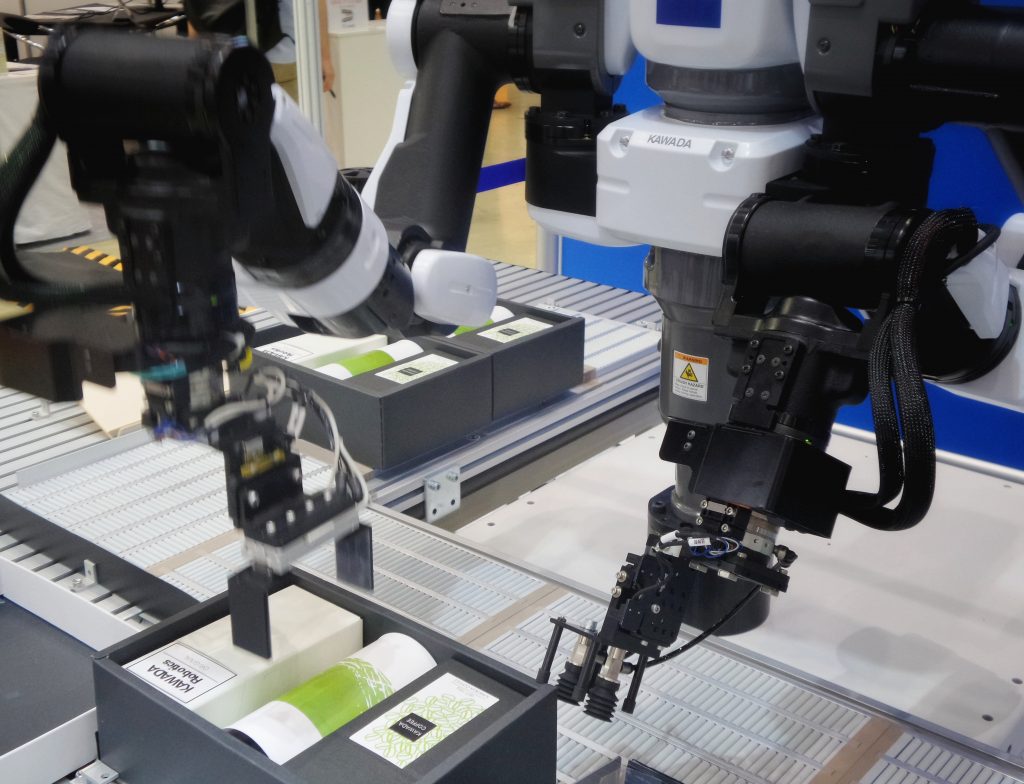#1. 54% of workers worry about losing their job in next 12 months: World Economic Forum
There is good news and bad news. More than half (54%) of working adults worry about losing their jobs in the next 12 months. On the other hand, however, 67% of them remain hopeful and believe their employers will help them retrain on the current job to prepare for future challenges. This is according to a new Ipsos survey done for the World Economic Forum and comes at the time when governments are phasing out crisis support mechanisms covering people’s wages and maintaining jobs during the pandemic. Labour markets have recently been under pressure due to the acceleration of automation and robotization trends. For more information, read here.

#2. 62% of CEOs expect little to no problems finding qualified workers
A recent survey carried out among top executives shows that fewer and fewer CEOs expect problems finding qualified workers in the near future. 62% of them foresee little to no problems finding qualified workers, while just 11% believe there will be widespread talent shortages. That said, many companies are not in a rush to hire new staff. One-third of CEOs say that they anticipate laying people off over the next 12 months. Furthermore, 21% of companies foresee no increase in their employees’ wages, and 5% of all employees might even see a pay cut, reports Staffing Industry Analysts.

#3. The technology-driven world of work and COVID-19 have given rise to ‘technostress’
Have you heard of “technostress”? Probably not, but if you’ve been working from home these past months and you’ve struggled to navigate multiple technologies daily, then the chances are you suffer from it! This Sydney Morning Herald article defines technostress as a “specific kind of stress relating to the various technologies we engage with or feel compelled to engage with more than we’d like.” This fast-paced technology-driven era has created the impression that everyone needs to respond to their emails rapidly. Surprisingly, technostress has less to do with one’s technical skills and more to do with one’s personality. It even affects highly skilled professionals and those used to working with technology for work.

#4. Gen Z is in an underemployment crisis — The consequences could be long-term
Young people remain one of the most negatively impacted groups by COVID-19 and its economic fallout. The unemployment levels of young people and Gen Z, in particular, remain high (and much higher than the overall average), but according to a new report by the Economic Policy Institute picked up by Refinery29, the unemployment rate doesn’t tell the full story of Gen Z’s job struggles. A more informative metric to look at is underemployment. This measure includes not only people who are actively looking for a job but also those who have given up actively job hunting and those who work part-time but would like to work full-time. Taking these groups into account we find that a full 35% of Gen Z people are underemployed in the US – a number that is even higher for non-white Gen Z. Such high levels of underemployment will have long-term effects on our labour markets even after these people find jobs.

#5. Machines to ‘do half of all work tasks by 2025’
The so-called robot revolution means that by 2025 half of all work tasks will most likely be done by machines, reports BBC, citing a recent World Economic Forum report. On the other hand, 97 million new jobs will be generated mostly in care, big data, and the green economy. Of those 300 companies surveyed, 50% said they were




